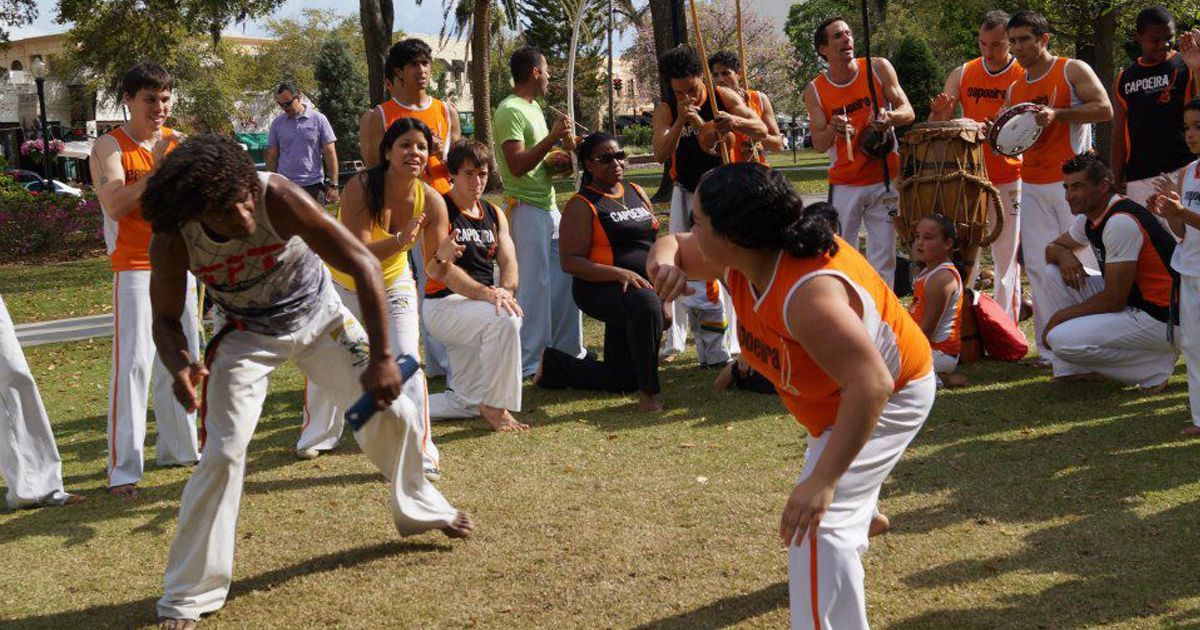The History of Capoeira and its Cultural Significance
Capoeira is a Brazilian martial art that combines elements of dance, acrobatics, and music. It has a rich history and holds significant cultural importance in Brazil and beyond.
Origins of Capoeira
Capoeira is a unique martial art form that has deep roots in the history of Brazil. It was developed by enslaved Africans who were brought to Brazil during the colonial period. These Africans were forced to work on plantations and were subjected to harsh treatment and oppression by their European masters.
Despite their difficult circumstances, the enslaved Africans found ways to resist and fight back against their oppressors. Capoeira emerged as a powerful form of resistance, combining elements of dance, music, and combat techniques.
- Developed by enslaved Africans in Brazil: Capoeira was born out of the experiences of enslaved Africans in Brazil. It was a way for them to express themselves, maintain their cultural traditions, and resist their oppressors.
- Used as a form of resistance against oppression: The practice of Capoeira allowed enslaved Africans to train their bodies and minds for self-defense. It provided them with a sense of empowerment and solidarity in the face of adversity.
- Incorporates elements of African dance and combat techniques: Capoeira is a blend of African dance movements and martial arts techniques. The rhythmic music and acrobatic maneuvers in Capoeira reflect the cultural heritage of its originators.
Over time, Capoeira evolved into more than just a fighting style. It became a symbol of freedom and resilience for the Afro-Brazilian community. Today, Capoeira is practiced and celebrated around the world as a form of cultural expression and physical discipline.
Evolution of Capoeira
Capoeira, a unique and captivating martial art form, has a rich history that spans centuries. From its humble origins as a banned practice in Brazil to its recognition as a national sport, the evolution of Capoeira is a fascinating journey of resilience and cultural significance.
Banned in Brazil in the 19th Century
In the 19th century, during the period of slavery in Brazil, Capoeira was born out of a blend of African traditions and Brazilian influences. Slaves used this art form not only as a means of self-defense but also as a way to preserve their cultural identity and resist oppression.
However, the slave owners viewed Capoeira as a threat to their authority. They feared that the physicality and camaraderie of Capoeira could lead to uprisings among the enslaved population. As a result, Capoeira was banned in Brazil in the 19th century, driving it underground and forcing practitioners to conceal their activities.
Despite being outlawed, Capoeira continued to be practiced in secret. The resilience of its practitioners and the deep-rooted cultural significance of the art form ensured its survival even in the face of adversity.
Revived in the Early 20th Century as a Cultural Practice
As Brazil transitioned from slavery to a more inclusive society, Capoeira resurfaced in the early 20th century as a cultural practice. Mestre Bimba, a legendary figure in the world of Capoeira, played a vital role in this revival by formalizing the art form and introducing it to a wider audience.
Mestre Bimba created a new style of Capoeira known as Capoeira Regional, which combined traditional Capoeira movements with elements of other martial arts. By emphasizing discipline, respect, and physical conditioning, Mestre Bimba sought to elevate Capoeira from a marginalized practice to a respected art form.
Through his efforts, Capoeira gained recognition as a valuable cultural heritage of Brazil. The rhythmic music, acrobatic movements, and interactive gameplay of Capoeira captured the hearts of people both within Brazil and around the world.
Recognized as a National Sport in Brazil
In the modern era, Capoeira has transcended its origins to become a symbol of Brazilian identity and unity. Its integration into mainstream culture has led to the formal recognition of Capoeira as a national sport in Brazil.
Capoeira competitions and academies are now prevalent across the country, attracting participants of all ages and backgrounds. The inclusivity of Capoeira, with its emphasis on cooperation and mutual respect, has made it a popular choice for those seeking not only physical fitness but also a sense of community and belonging.
Today, Capoeira is celebrated as more than just a martial art – it is a living embodiment of the resilience, creativity, and spirit of the Brazilian people. Its evolution from a banned practice to a nationally recognized sport is a testament to the enduring power of culture and tradition.
Cultural Significance of Capoeira
Capoeira, a martial art with roots in Brazil, holds deep cultural significance that goes beyond mere physical movements. It serves as a powerful tool for connecting people, preserving traditions, and celebrating a rich heritage.
Promotes Unity and Community Among Practitioners
One of the most striking features of Capoeira is its ability to foster unity and community among its practitioners. Through the physical practice of the art form, individuals come together in a shared space to learn, grow, and support one another. The collaborative nature of Capoeira encourages camaraderie and cooperation, breaking down barriers and creating bonds between people from diverse backgrounds.
Preserves African Heritage and Traditions
Capoeira has its roots in the African heritage of the enslaved people brought to Brazil centuries ago. By practicing Capoeira, individuals not only connect with this history but also actively preserve and promote African traditions. The movements, rhythms, songs, and stories embedded in Capoeira serve as a living testament to the resilience and creativity of the African diaspora, ensuring that these cultural elements continue to thrive and evolve.
Celebrated Through Music, Dance, and Roda (Circle)
Capoeira is not just a martial art; it is a vibrant celebration of music, dance, and community. The acrobatic movements of Capoeira are accompanied by music played on traditional instruments like berimbaus, tambourines, and drums, creating a rhythmic backdrop that energizes the practitioners and spectators alike. The dance-like quality of Capoeira adds an element of grace and fluidity to the practice, transforming it into a mesmerizing performance. The roda, or circle, in which Capoeira is played is a symbolic space where participants engage in friendly competition, exchange knowledge, and showcase their skills, all while fostering a sense of belonging and mutual respect.
Capoeira promotes unity and community among practitioners, preserves African heritage and traditions, and is celebrated through music, dance, and the roda. It's more than just a martial art; it's a cultural phenomenon that connects people, preserves history, and fosters a sense of belonging.
Quick Links
Find Us
© Made With Love by Winterbourne Websites



